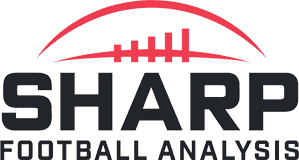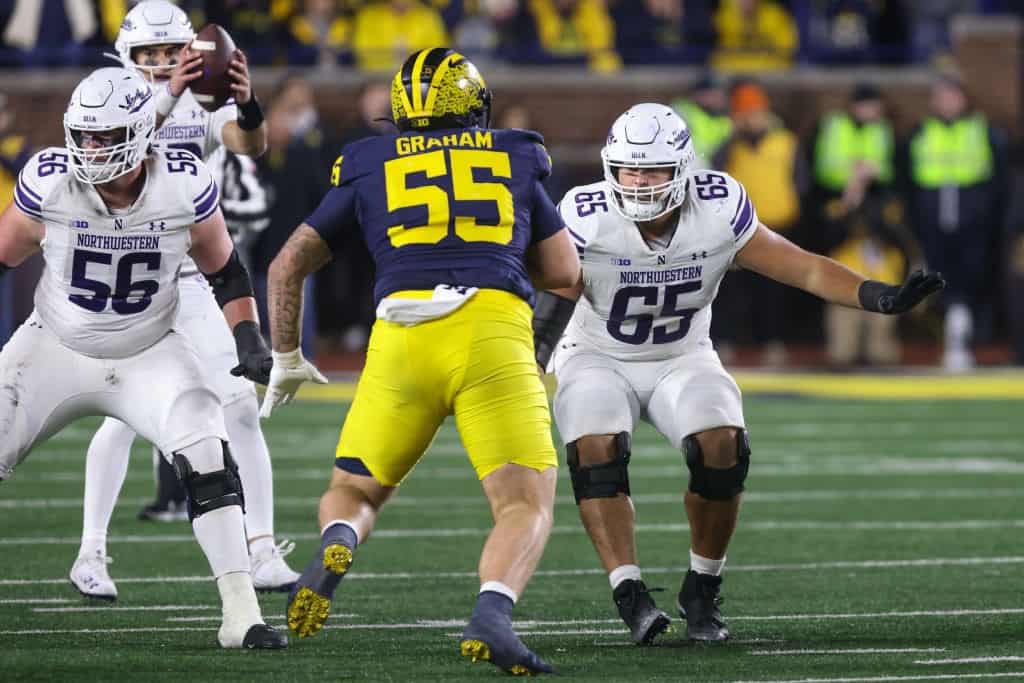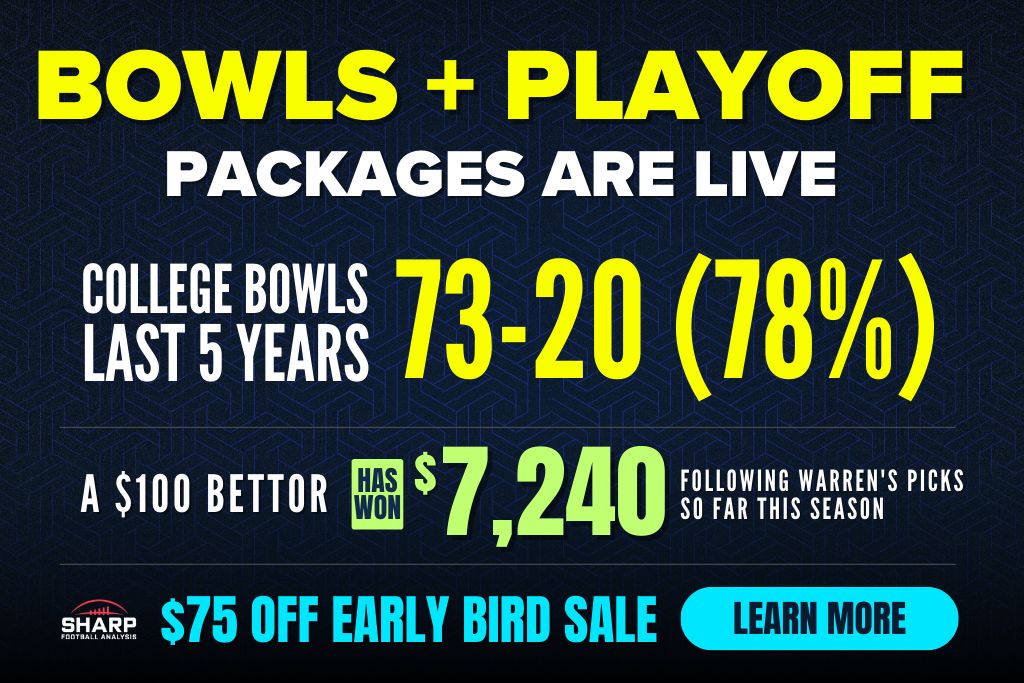The following is an excerpt from Warren Sharp's 2025 Football Preview book. In addition to Warren's deep, detailed write-up on all 32 NFL teams, each chapter features page after page of full-color charts, stats, and heatmaps as well as draft class analysis from Ryan McCrystal. Click here for a full FREE chapter from the 2025 Football Preview.
With 2025 NFL training camps on the horizon, we’re starting to understand how 2025 NFL draft classes will impact each roster this season.
Let's look at the Cleveland Browns, breaking down the most likely instant-impact rookies from each class, while also providing some insight into why certain early picks may not see the field.
Who are the Cleveland Browns rookies?
- Mason Graham (DL, Michigan)
- Carson Schwesinger (LB, UCLA)
- Quinshon Judkins (RB, Ohio State)
- Harold Fannin Jr. (TE, Bowling Green)
- Dillon Gabriel (QB, Oregon)
- Dylan Sampson (RB, Tennessee)
- Shedeur Sanders (QB, Colorado)
Cleveland Browns Draft Class Grade:
The Cleveland Browns received an A draft grade from Sharp Football.
Which Browns Rookies Will Make An Impact?
The Browns bolstered their defensive line with the selection of Mason Graham (first round), who is expected to start immediately.
Graham should make an immediate impact as a pass-rusher. In 2024, he ranked seventh in the Big Ten with a 7.9% pressure rate from the interior defensive line.
Questions about his length and strength are fair, however, and may limit his ability to remain as effective against the run in the NFL.
Carson Schwesinger (second round) will compete for a starting job, potentially stepping in for Jeremiah Owusu-Koramoah, who will miss the 2025 season due to a neck injury.
Schwesinger’s high football IQ and reliable tackling should allow for a smooth transition to the league. However, he can’t match Owusu-Koramoah’s athleticism.
Schwesinger will be pushed by free agent addition Jerome Baker, whose athleticism might be a better match for JOK’s role in the defense.
Quinshon Judkins (second round) and Dylan Sampson (fourth round) are expected to take over the Browns backfield. If all goes well, this could be the Browns’ new version of Nick Chubb and Kareem Hunt — though July legal troubles could make everything below moot.
Judkins will play the Chubb role as the more physical downhill runner, while the more versatile Sampson could see increased action on passing downs.
Although he has the physical traits to step in for Chubb, Judkins will need to prove he has the vision to produce in a feature role.
When accounting for defenders in the box and the inside/outside direction of the run, Judkins gained 6% fewer yards than expected over the last two seasons at Ole Miss and Ohio State, ranked 44th out of 56 qualified Power Conference running backs.
Sampson ranked 25th (8% above expected) by the same metric.
One of the reasons Sampson slid in the draft may have been questions about his ability to transition from Tennessee’s spread offense, which is one of the least NFL-like schemes in the college game.
Sampson ran into a box with seven or more defenders on just 36% of his carries last year. Fortunately for him, Cleveland running backs saw seven or more defenders at the league’s lowest rate in 2024, but their 59% rate was still a massive leap from what Sampson saw with the Vols.
When Sampson faced seven or more defenders in the box, he averaged just 4.5 yards per carry, ranked 12th out of 18 qualified SEC running backs.
Harold Fannin Jr. (third round) is a unique tight end prospect. He does not have the size and athletic traits of a typical dynamic weapon, and yet no one could cover him in the MAC.
Bowling Green had very little passing attack outside of Fannin 一 he had more than double the targets of any teammate and nearly triple the receiving yards.
Even in the MAC, when the defense knows the offense wants to force the ball to its tight end, it takes a special playmaker to consistently get open.
One of Fannin’s strengths that should translate is his ability to produce after the catch. He’s a physical runner, forcing 28 broken/missed tackles last year while picking up 7.7 yards after catch per reception.
It was easy for the Browns to justify adding a young quarterback to the depth chart behind Joe Flacco and Kenny Pickett.
But why reach for one with such a low ceiling like Dillon Gabriel (third round)? And then why add another in Shedeur Sanders (fifth round)?
Gabriel is an undersized passer who lacks the arm to set a high ceiling for his development. Another former Browns third-round pick, Colt McCoy, is an easy comparison on many levels.
Gabriel's decision-making and accuracy give him the potential to carve out a long career as a backup, but it feels like a wasted third-round pick given the Browns' many other needs.
The same can be said for Sanders. Why are the Browns spending a fifth-round pick on a fourth-string quarterback?
It’s easy to see how Sanders could have been the best available player on the board for the Browns, but team building is about more than simply winning the draft by finding value.
Given the state of the organization and the fact that the Browns have two first-round picks in 2026, it would come as a surprise if the team did not draft a quarterback early in next year’s draft.
So, Cleveland essentially threw away two of their seven picks on players who, at best, will be competing for one roster spot as a backup in 2026 and beyond. That’s not a justifiable approach to team building for a roster with so many flaws.
That said, we can’t talk about the Browns draft class without praising the incredible haul Andrew Berry got from Jacksonville for the number-two pick.
Travis Hunter and Abdul Carter were certainly hard to pass up, but for a rebuilding organization, the picks acquired from the Jaguars offered significantly more value and set the Browns up to potentially turn things around with the added draft capital.
This analysis continues in the 2025 Football Preview
Order Warren Sharp's 2025 Football Preview to get draft class analysis for all 32 NFL teams.
Warren Sharp’s 550+ page full-color PDF, the 2025 Football Preview, is unlike anything you have previously read. Stunning visualizations, including new heat maps, are built with the reader in mind. Innovative, next-level thought process abounds in every team chapter and article.
Get Warren's Book for $34.99
Warren Sharp's book shares insights into the players, coaches, teams, and philosophies with one goal: to prepare you for the 2025 NFL season with the smartest information delivered in the fastest, most direct way possible for optimal reviewing and retention.
- Team Chapters previews are in-depth, data driven & full of actionable info
- Fantasy Football player profiles, predictions, and ranks
- Vegas Odds forecast team wins, division rankings, lines for all 2025 games
- Coaching strategic advice for teams, play calling analysis & team tendencies
- Front Office Analysis positional spending, roster construction & cap analysis
- Reasons to bet over/under win totals & analysis of futures betting market
- Rookie draft class deep dive into impact for every team
- Rankings for every positional unit on every team with analysis

















